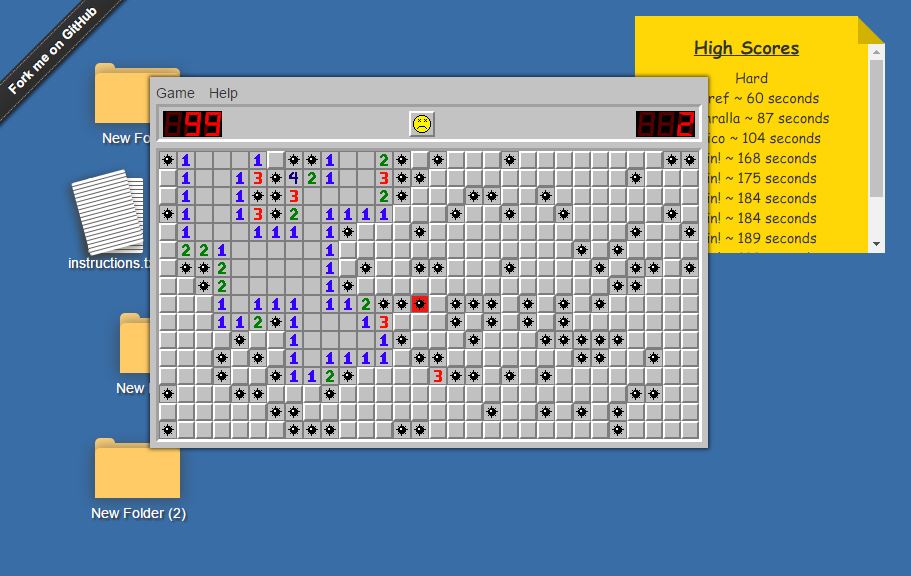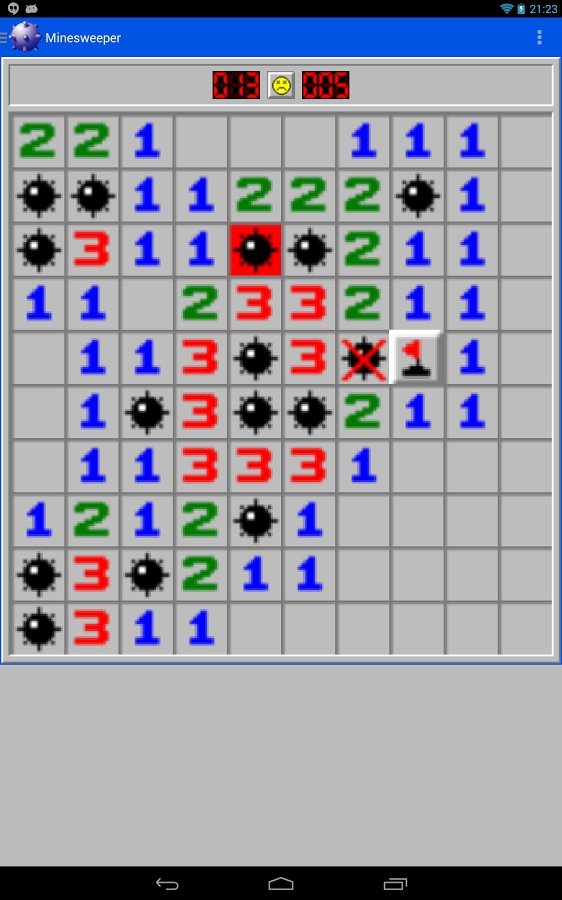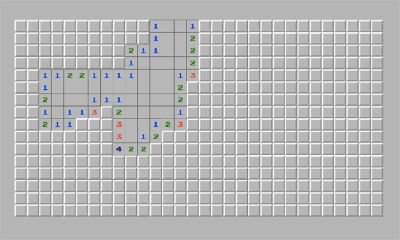
In general it is best to make guesses where you have a high probability of success.

Flag cells where there is a bomb and remove cells where there is not. If you look at multiple sets of numbers in near proximity they can help you create a matrix to solve where you are certain a bomb is or a bomb is not.If a light gray box has no numbers on it that means there are zero adjacent bombs and you can uncover every square touching it.After you open up the playing field you can use numbers showing on the face of spots to do a process of elimination to figure out where bombs likely are.If an uncovered square does not have any numbers on it then you can clear out the 8 surrounding cells & repeat the process until there are numbers on the face of uncovered squares.To some degree this begins as a game of luck until you open up part of the playing field.Off the start of the game you click on cells to reveal if they have bombs or not and open up a portion of the playing field.The game is timed, with the timer showing in the upper part of the screen.If you lay a flag in the wrong spot you can later remove it.As you lay flags the bomb count decreases on the presumption that each flag you have laid is correct. The bomb count is shown in the upper right corner.Each game has around 25 bombs (plus or minus 2), giving each square about a 20% chance of having a bomb.This game uses a 9 by 14 grid for a total of 126 squares.There is a restart button in the upper left corner.Unclick the flag button to remove other squares.Click on the flag at the top of the playing field to lay flags where you are certain there is a bomb.Click the mouse to clear out squares where you think there is a bomb.


Use the mouse or touch your screen to remove squares from the playing field and cover all squares with bombs with a flag.


 0 kommentar(er)
0 kommentar(er)
